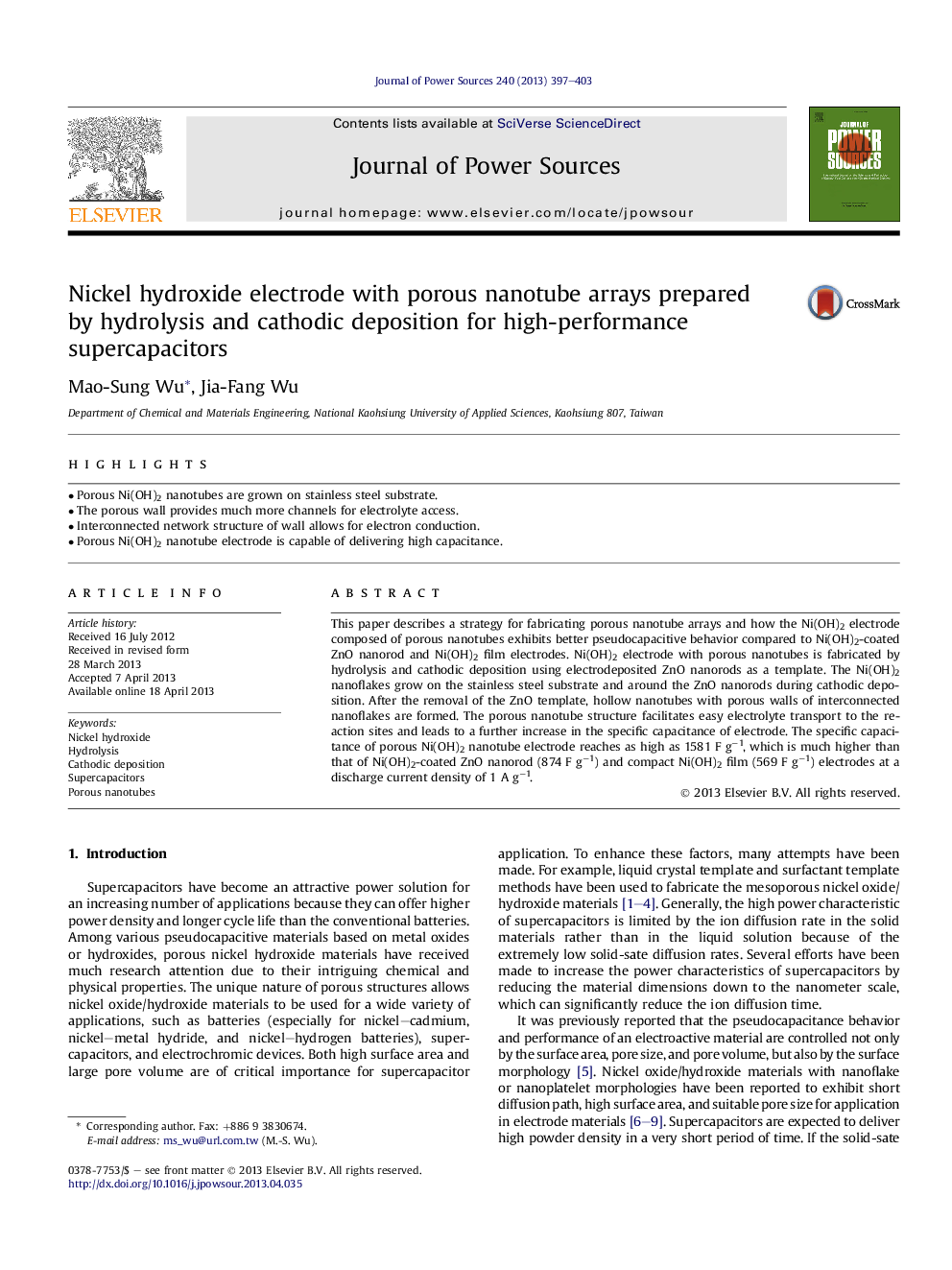| Article ID | Journal | Published Year | Pages | File Type |
|---|---|---|---|---|
| 7740659 | Journal of Power Sources | 2013 | 7 Pages |
Abstract
This paper describes a strategy for fabricating porous nanotube arrays and how the Ni(OH)2 electrode composed of porous nanotubes exhibits better pseudocapacitive behavior compared to Ni(OH)2-coated ZnO nanorod and Ni(OH)2 film electrodes. Ni(OH)2 electrode with porous nanotubes is fabricated by hydrolysis and cathodic deposition using electrodeposited ZnO nanorods as a template. The Ni(OH)2 nanoflakes grow on the stainless steel substrate and around the ZnO nanorods during cathodic deposition. After the removal of the ZnO template, hollow nanotubes with porous walls of interconnected nanoflakes are formed. The porous nanotube structure facilitates easy electrolyte transport to the reaction sites and leads to a further increase in the specific capacitance of electrode. The specific capacitance of porous Ni(OH)2 nanotube electrode reaches as high as 1581Â FÂ gâ1, which is much higher than that of Ni(OH)2-coated ZnO nanorod (874Â FÂ gâ1) and compact Ni(OH)2 film (569Â FÂ gâ1) electrodes at a discharge current density of 1Â AÂ gâ1.
Related Topics
Physical Sciences and Engineering
Chemistry
Electrochemistry
Authors
Mao-Sung Wu, Jia-Fang Wu,
